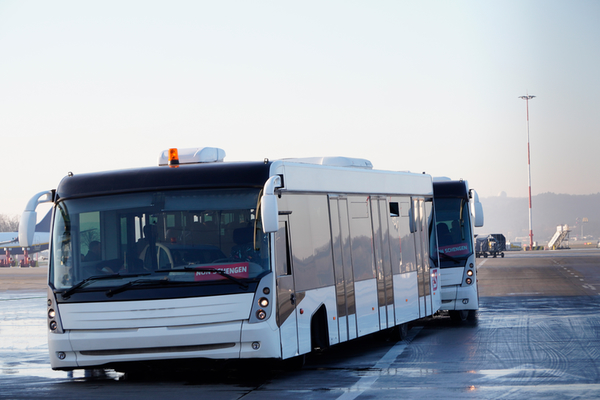
Aviation legislation has made a significant impact on the training of professional pilots in higher education flight programs over the past six years. It is a common misconception that professional pilots with less than 1500 hours of flight time are responsible for aviation-related crashes and fatalities. This legislation targets schools and the courses they offer to lead to a Bachelor of Science with a professional aviation major. These schools produce pilots who have approximately 300 hours of total flying time. Many pilots become Certified Flight Instructors (CFI) after they complete their training and then go on to instruct student pilots. However, accidents fatalities rates are at an all-time low (Boeing 2014), and airlines consistently operate with the highest passenger load factor (Airlines for America 2015b). We can learn from the Wright brothers' 1903 experience that they had five sets of parts on board when they flew. Based on their experience, they crashed an average of five times every time they flew. While the Wright brothers were instrumental in civil aviation's birth and their methods for achieving crewed flight were not without flaws, they were pilots and understand that flying involves a risk of death. It is unacceptable to crash on an expected flight with the modern technology and flying skills of modern pilots. This study is not intended to reduce the suffering of those who have been injured in an aviation-related accident or their survivors, who are left with deep emotional and psychological scars. It's meant to help them learn from these tragic events. This study will also evaluate the effects of Public Law 111-216 (PL111-216) on collegiate flight schools following the collapse of collagen flight 3407. Colgan Flight 3407 is an example of how the airline industry can work together to determine the cause and create new regulations that will prevent the same fate from happening again.
Colgan flight 3407 crashed on February 12, 2009, at 10:00 Eastern Standard Time. Colgan Air Inc. operated a Bombardier 8-Q400 turboprop plane with 86 passengers. It flew under codeshare agreements with Continental Airlines. The commercial aviation industry and safety regulations that they adhere to are under significant scrutiny after this crash. The National Transportation Safety Board (NTSB), which released a report claiming that pilot error was the cause of the accident, attracted a lot of attention. NTSB stated that although the crew had experience in the aircraft, they were fatigued from repositioning from West Coast to East Coast. This was due to their flight from Liberty International Airport (Newark, New Jersey) to Buffalo, New York. The NTSB report revealed a major overhaul in the safety and qualifications of American collegiate flight students. This was due to inadequate training in the cockpit and a lack of regulation by the government.
The "Colgan Air Flight 3407 Air Disaster" was a public outcry that developed in the wake of what became known as the "Colgan Air Flight 3407 Air Disaster". This was mainly fueled by the family members of the victims who sought assistance from the national media to bring attention to issues such as pilot qualifications and code sharing transparency. The national press made it possible to petition Congress for legislation to prevent another tragic aviation accident such as Colgan Air Flight 3407. Any changes to this law could have a significant impact on how pilots are trained and certified, and would also affect the educational institutions where pilots were educated.
The United States Federal Government felt compelled by the Second Session to act and introduced House Resolution 5900 on July 28, 2010. This was despite testimony from Randy Babbitt (former Administrator of the FAA) during a House Transportation and Infrastructure Committee Hearing regarding Aviation Safety and Pilot Training. Babbitt stated:
Some people believe that increasing the minimum hours required to fly commercial aviation in a pilot's career is sufficient. I have repeatedly stated that I don't believe that increasing the number of hours without considering the quality of that experience and time is a good way to improve a pilot's proficiency in commercial aviation ("Airline Safety and Pilot Training, Part 2 Witnesses testified about the Federal Aviation Administration's pilot training and safety programs. ", 2010).

The Bill's initial purpose was to amend the Internal Revenue Code of 1986. It would also extend funding and expenditure authority for the Airport and Airway Trust Fund (26 U.S. Code 9502), which is signed into law to authorize funds to be credited or paid into the trust fund. Title 49, United States Code would also be amended to extend airport improvement programs and grant authority to improve airline safety and other purposes. {The Short Title of the act is the Airline Safety and Federal Aviation Administration Extension Act of 2010 The act's short title is Airline Safety & Federal Aviation Administration Extension Act. o f 2010. Because of the section that allowed for an increase in the entry requirements for First Officers into a pilot position on air carriers, it is sometimes called Public Law 111-216 (PL 111-216). The increased media attention and testimony from the families of those who were hurt by Colgan Air Flight 3407's crash resulted in the House of Representatives working together with the United States Senate to streamline Public Law 111-216. On August 1, 2010, the complete Bill was sent to the President of America. The Federal Aviation Regulation (FAR), which was administered by the FAA, allowed pilots to be hired by regional airlines at 18 years old with at least 250 hours of flight time. They also had to have a commercial pilot's license with both multi-engine and instrument ratings. The new Public Law 111-216 requires that the same pilots be at least 23 and have at least 1500 hours of flight time. If they are not a professional pilot and have completed a four-year degree, the minimum hours required to obtain a Restricted Airline Transport Pilot (R-ATP), the certificate will drop to 1000 hours. However, if the applicant for (R-ATP), the certificate was transitioning from military service, they would only require 750 hours to obtain the certificate.
